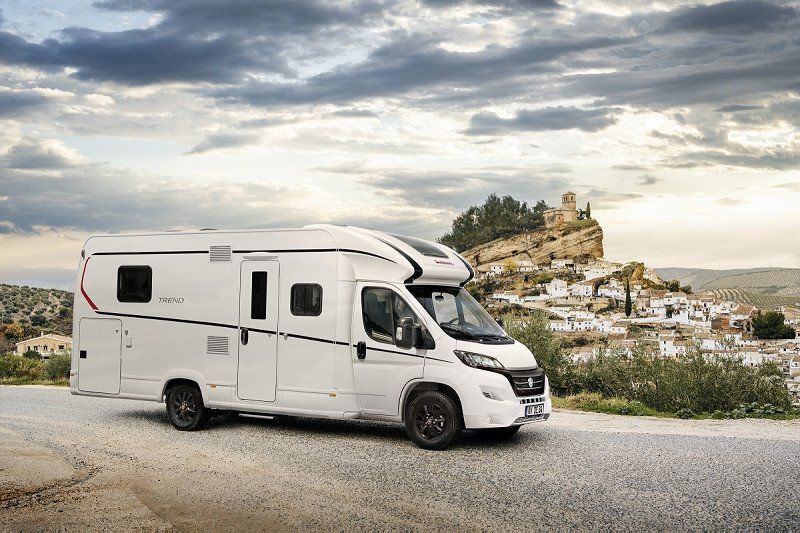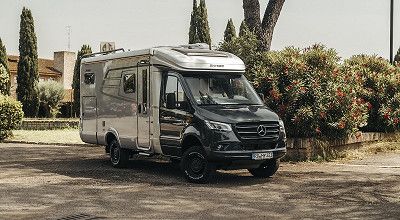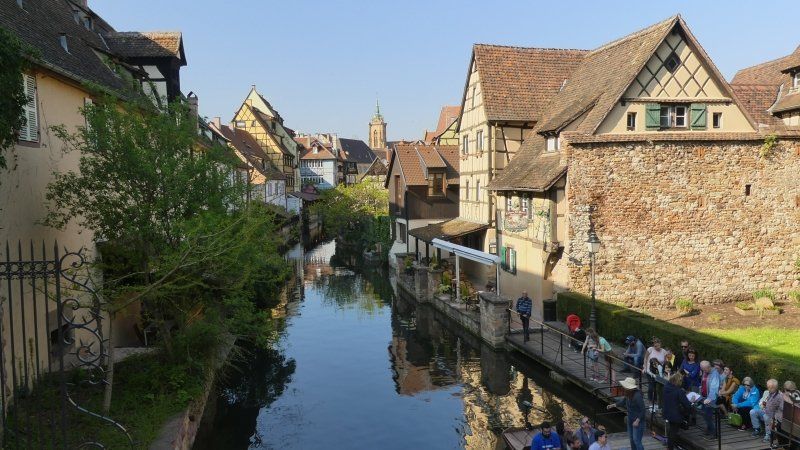What exactly is a low profile motorhome?
The term semi-integrated refers to how the vehicle is used. The cab is from a standard base vehicle, i.e. from a Fiat Ducato or Mercedes Benz Sprinter. This is easy to see from both inside and out. Unlike in an overcab motorhome, the interior of the cab can be partly integrated into the living area by turning the driver and passenger seats so that they become part of the seating area.Another difference: With regard to price, a semi-integrated motorhome is generally more affordable than a comparable integrated vehicle. So it is no surprise then, that the low profile motorhome body type is currently the most popular among the motorhome owners in Europe. Additionally, it combines the advantages of the overcab and the integrated motorhomes: The semi-integrated motorhomes retain the standard cab of the overcab models and compact standard width of the base vehicle, which make handling much easier for inexperienced motorhome drivers. From the integrated motorhomes, the low profile vehicles have the headroom and storage in the area over the cab.
The roof of a semi-integrated or low profile motorhome is flatter than that of an overcab vehicle so it is more aerodynamic, meaning it has a lower overall height than a comparable alcove model and correspondingly lower fuel consumption. Depending on the shape of the hood, a semi-integrated motorhome is usually between 2.70 and 2.95 m high. The higher models are those that have a drop-down bed under the curved roof, providing additional berths.
Is a semi-integrated motorhome the right fit for you?
Concerning the inner layout, there is little difference between an overcab, semi-integrated or integrated motorhome. However, compared to the large family alcove vehicles, the semi-integrated models usually have fewer beds and seats. This is because a semi-integrated motorhome is normally designed to be an ideal holiday accommodation for two persons: With a half dinette behind the cab made up of a 2-seater bench and table, which can be turned into a four-person seating arrangement, and a kitchenette facility, bathroom and either two single beds or one double bed at the rear.
However, in recent years the manufacturers have also created low profile versions for four persons, which include a drop-down bed in the front, generally over the half dinette, thereby offering two extra berths. The idea behind this: This type of motorhome is not only interesting to familys, for whom an overcab motorhome is too high, but as with the integrated motorhomes, it is appealing to grandparents, who occasionally want to take one or maybe two grandchildren on a short break with them. Due to its compact size, these target groups often use a semi-integrated motorhome both for spontaneous weekend trips as well as longer trips.
What role does weight play in low profile motorhomes?
The crucial question before purchasing or renting any body type concerns the storage and loading capacity: What and how much would you like to take with you on your motorhome holiday? Depending on your requirements, there are semi-integrated motorhomes as compact models up to 6 m length with a small rear storage area, or variants up to 8 m total length with a large rear garage and a permissible total weight of up to 3.5 t or more.If you are travelling as a couple, a motorhome with 3.5 t should be absolutely sufficient. At the same time, it is always advisable to check the boxes on the motorhome shopping checklist of the accessories available for the preferred model and then to estimate roughly how many additional kilos will be added to the “mass of the vehicle in running order”. A 3 m long canopy, for example, adds around 30 kg to the overall weight. But it is a superb thing to have on your sunny summer holiday. On the other hand, whether you really need an oven in your motorhome, with its extra 17 kg, is purely a matter of choice.
Our tip for making a decision: Use the checklist below to find out which criteria are the most important for you when buying a motorhome, and then take it to your dealer or to one of the important seasonal caravanning trade fairs.



































